
Guillermo Mordillo
Guillermo Mordillo (1932-2019) was one of the best known Argentine cartoonists of the 20th century, and probably one of the best known regardless his country. Mordillo’s little white men were and still are a kind of trademark of graphic humor worldwide, displayed in items that range from collector’s watches to ocean liners.
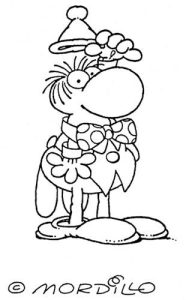 Although he developed his career mostly in France and Spain (and later in the cartoony Principality of Monaco), he regularly returned to Argentina, where his work was always highly appreciated, although without reaching the heights of stardom he knew in Europe. It was during one of these visits to Argentina that I was able to discover that Mr. Mordillo, in spite of being such a serious-looking person, was also a serious cartoon buff.
Although he developed his career mostly in France and Spain (and later in the cartoony Principality of Monaco), he regularly returned to Argentina, where his work was always highly appreciated, although without reaching the heights of stardom he knew in Europe. It was during one of these visits to Argentina that I was able to discover that Mr. Mordillo, in spite of being such a serious-looking person, was also a serious cartoon buff.
I met Guillermo during a dinner hosted by publisher and cartoonist Andrés Cascioli, in the late 1980s. Cascioli was the editor of “Humor”, one of the most important magazines in Argentina at that time, and my father, Carlos Nine, was doing the cover art. I was a kid back then and an especially impudent one, because I remember having made a little drawing for the benefit of the guest of honor that Mr. Mordillo (I later found out) kept for years.
 A long time later, I received another invitation to dinner. Mordillo was back in Argentina. Guillermo had something to show me: it was the drawing I had given him more than thirty years ago. It was stuck inside a sort of big album that he carried everywhere, full of illustrations and photos. On a prominent page there was even one from Mr. Disney, signed by “Walt” himself (probably an employee of the studios), which had come to him in response to an early letter addressed to the House of the Mouse.
A long time later, I received another invitation to dinner. Mordillo was back in Argentina. Guillermo had something to show me: it was the drawing I had given him more than thirty years ago. It was stuck inside a sort of big album that he carried everywhere, full of illustrations and photos. On a prominent page there was even one from Mr. Disney, signed by “Walt” himself (probably an employee of the studios), which had come to him in response to an early letter addressed to the House of the Mouse.
He told me that his whole vocation had been triggered by the film “Snow White and the Seven Dwarfs”, seen at the age of five, on the occasion of its premiere. The state of permanent enthusiasm that the film had generated in him remained intact almost eighty years later, along with the same critical distance from Disney products that he might have had then. Then, with the intuition of a secret society member, Guillermo pointed his finger at me gravely and asked without further ado, “Who was Goofy’s main artist?”
“Art Babbitt, of course,” I croaked, before I knew what I was doing.
From that moment on, everything was a skidding of names and data, and the ghosts of Norman Ferguson, Dick Lundy or the incredible Freddy Moore passed in front of us in stampede. The rest of the evening’s attendees stare at us with their mouths agape, and I strongly suspect that the whole thing, seen from the outside, should be quite embarrassing. That’s always the case with animation buffs.
 I kept in touch with Guillermo and we saw each other on his annual visits to Argentina. Little by little, he began to tell me his story, which I only knew in a fragmentary way. And since animation is central to it (although Mordillo only practiced it laterally), it corresponds perfectly to this medium.
I kept in touch with Guillermo and we saw each other on his annual visits to Argentina. Little by little, he began to tell me his story, which I only knew in a fragmentary way. And since animation is central to it (although Mordillo only practiced it laterally), it corresponds perfectly to this medium.
Guillermo Mordillo was born in Buenos Aires in 1932. The son of Spanish immigrants, his story begins as the prototypical tale of a whole family sharing a single room in relative poverty. It seems that the premiere of Snow White (which in Argentina took place in February 1938) fell on the boy like a bolt from the blue. He recalled the event eighty years later for a German journalist particularly impressed by the noses in Mordillo’s characters:
“The nose thing has to do with my mother taking me to the movies when I was little,” says Mordillo. He saw in Snow White how the huge proboscis of the seven dwarves pushed over the edge of the bed, amazed by the giantess who had laid down on their mattresses. This scene was pivotal for the rest of his life. Not only in terms of the noses of his creatures, but also in the hidden eroticism that can be found again and again in his work, which includes tens of thousands of drawings. Even before the movie theater lights came back on, Mordillo, then only five years old, decided to become an illustrator. Animator, so much the better.
At age 13 he drew his first comic strip, “Pascacio el Vagabundo” (Pascacio the Tramp), featuring an anthropomorphic kitten.
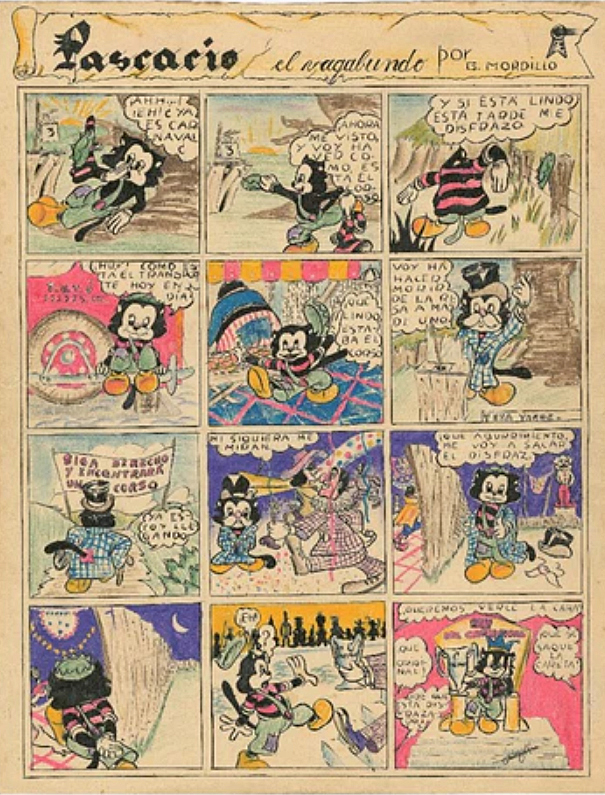
A year later, he left school with his parents’ blessing to become a professional cartoonist. He studied at the School of Journalism in Buenos Aires and graduated in 1948. A precocious cartoonist, at the age of eighteen he illustrated storybooks for the publishing house Codex, for whom he also drew covers for the local editions of “Cosmo Cat” (Fox Feature Syndicate) and “Hoppy the marvel bunny” (Fawcett Comics).

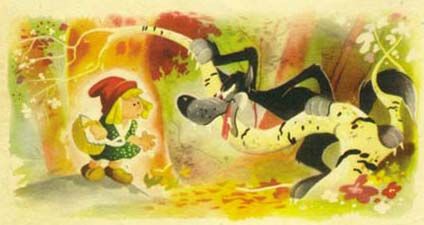
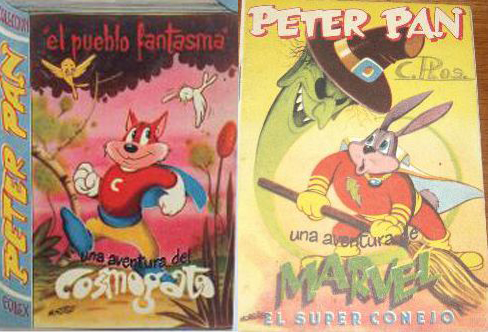
In 1952 he began to draw the adventures of his character “el Conejo Fosforito” (Matchstick the Bunny) for the magazine Peter Pan of the same publisher (scripts by Aldo Camarotta).
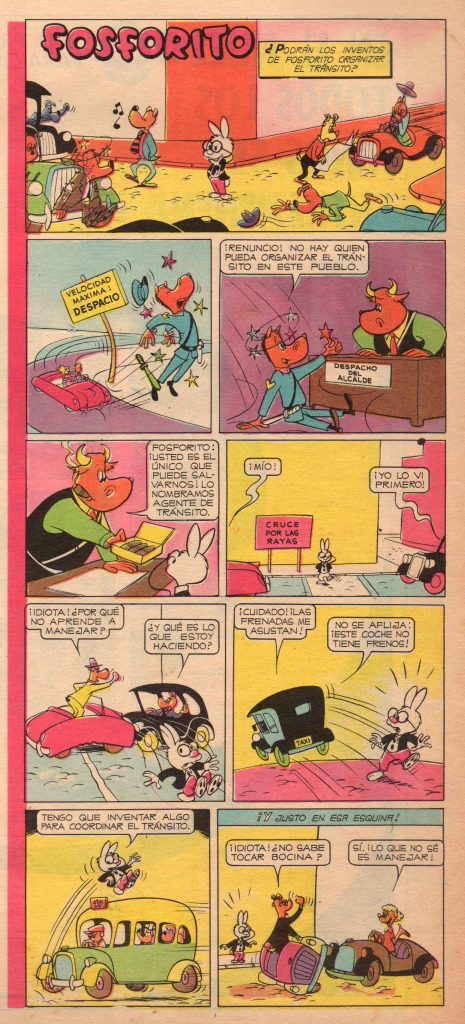
At the same time, he worked in the animation studios of José Burone Bruché, specialized in advertising animation and film titles. According to Guillermo, “the studio was in the Barracas neighborhood and I had to take the streetcar to get there, an endless trip. I took the opportunity to read Kant. I never understood a word.”
Bruché’s animation was quite rustic, to put it kindly, and even more so for an artist who had Disney as his model. Together with a colleague, the cartoonist Ubaldo Galuppo, they founded a precarious animation studio, Estudios Galas, apparently without much fortune.

In 1955, he received a call from a colleague, Jorge Caro, informing him that the future of animation lay in the most unlikely of places: Lima, Peru. That’s where he set off for. He did not find this supposed El Dorado, but he was employed as a freelance designer for the advertising company Mc Cann Erikson. In 1958 he illustrated children’s books for Editorial Iberia in Lima, which showed how animation had left its mark on them.
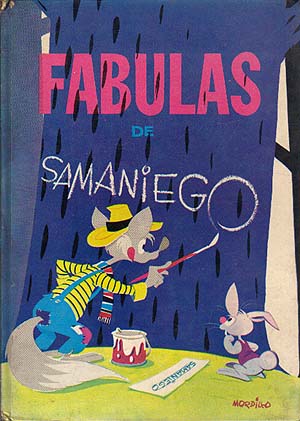
But Guillermo was still committed to his first love, and the mark of animation is not the same as animation itself. Around 1960 he traveled to the USA. In survival mode, he had created greeting cards for Hallmark Cards in Kansas and, having arrived in New York, he found a job at Famous Studios. Of his time at Famous, Guillermo recalled specifically Nick Tafuri and Seymour Kneitel, telling me that the old animators of the Fleischer era remembered the time of another Argentinean in the Studio, a certain “Dante”. It was Dante Quinterno, whose story is told here.
In Famous, Guillermo did inbetweens and designed a few characters, as the woodpecker that stars the 1961 short Trick or Tree.

“Trick Or Tree” – Mordillo’s design.
“Trick or Tree” on Youtube:
But Mordillo soon became disenchanted with the type of animation done in the studios at that time, the severe budgetary limitations and the general weariness of the results. He briefly evaluated the possibility of presenting himself at Disney, but dismissed the idea after arriving to the conclusion that animation, as he understood it, was a dying art to which he had come to too late (Henry James could have written a beautiful short story on this subject). For a while, he preferred drawing studio cards, this time for OZ Greeting Cards. Finally, he left for Europe in the early 1960s.
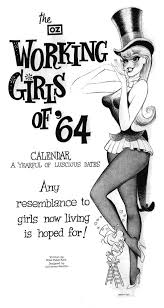 Settled in France, he resumed his work as an advertising illustrator. His skills in designing greeting cards got him a job at Éditions Mic-Max, but by 1966 he was fired. One of his friends convinced him to stay in France and apply his cartoons to some magazines. On July 1966, Mordillo published his first cartoon in Le Pèlerin. Since he spoke little French he decided to work in pantomime. Having finally found his trademark style, Mordillo’s cartoons broke through. Over the years, they appeared in French magazines such as Paris Match, Lui, Marie Claire and Pif Gadget. In 1968 his work found its way to the German magazine Stern. By the 1970s, Mordillo was one of the most recognizable and popular cartoonists everywhere. His name had become synonymous with those little white men who, despite traversing ominous landscapes (those cartoon backgrounds!), never lost a sort of placid bonhomie associated with silent films and the calm of a Buster Keaton-like conqueror, ready to bring order to chaos or vice versa. The “Mordillo man” -particularly popular in Germany- became a sort of trademark.
Settled in France, he resumed his work as an advertising illustrator. His skills in designing greeting cards got him a job at Éditions Mic-Max, but by 1966 he was fired. One of his friends convinced him to stay in France and apply his cartoons to some magazines. On July 1966, Mordillo published his first cartoon in Le Pèlerin. Since he spoke little French he decided to work in pantomime. Having finally found his trademark style, Mordillo’s cartoons broke through. Over the years, they appeared in French magazines such as Paris Match, Lui, Marie Claire and Pif Gadget. In 1968 his work found its way to the German magazine Stern. By the 1970s, Mordillo was one of the most recognizable and popular cartoonists everywhere. His name had become synonymous with those little white men who, despite traversing ominous landscapes (those cartoon backgrounds!), never lost a sort of placid bonhomie associated with silent films and the calm of a Buster Keaton-like conqueror, ready to bring order to chaos or vice versa. The “Mordillo man” -particularly popular in Germany- became a sort of trademark.
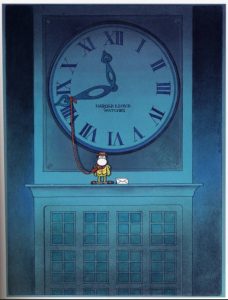 Of course, among the legion of “Mordillo” products that were developed, the animated cartoon could not be missing. Since the 1970s, Mordillo collaborated with several studios to adapt his cartoons into animated shorts for television. In 1971 he worked together with Marcelo Ravoni, followed by Friedrich W. Heye a year later. Pilion Film and MS Films adapted his work for German television, while ParisAnimation Films and Fantome Animations broadcast them on French television. Between 1976 and 1981 the Slovenian artist Miki Muster and the German Manfred Schmidt made about 400 shorts which were presented at Cannes and bought by TV studios from more than 30 countries. These minute-long cartoons greatly expanded his worldwide fame. Other new series were developed in the last decades. Guillermo, a known terror of the producers, could appear in person at the studios to ensure that all animation was kept “on model”, correcting the animation drawings himself if he deemed it necessary.
Of course, among the legion of “Mordillo” products that were developed, the animated cartoon could not be missing. Since the 1970s, Mordillo collaborated with several studios to adapt his cartoons into animated shorts for television. In 1971 he worked together with Marcelo Ravoni, followed by Friedrich W. Heye a year later. Pilion Film and MS Films adapted his work for German television, while ParisAnimation Films and Fantome Animations broadcast them on French television. Between 1976 and 1981 the Slovenian artist Miki Muster and the German Manfred Schmidt made about 400 shorts which were presented at Cannes and bought by TV studios from more than 30 countries. These minute-long cartoons greatly expanded his worldwide fame. Other new series were developed in the last decades. Guillermo, a known terror of the producers, could appear in person at the studios to ensure that all animation was kept “on model”, correcting the animation drawings himself if he deemed it necessary.
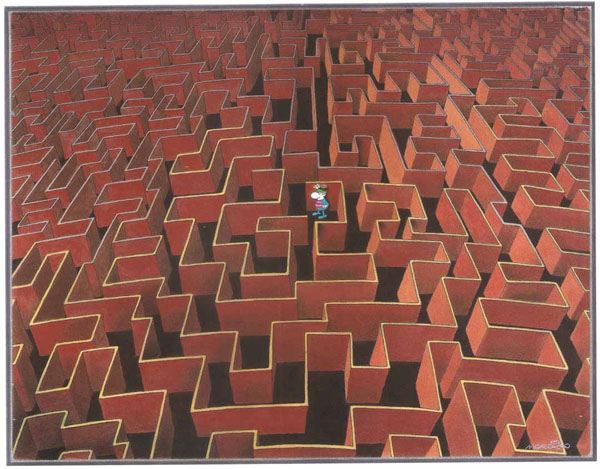
Mordillo also published three classical children’s books without words: The Damp and Daffy Doings of a Daring Pirate Ship (1971), Crazy Cowboy (1972) and Crazy Crazy (1974). The wacky adventures of the pirate ship always remained Mordillo’s favorite story and, at the age of 80, he completely redrew it for a new book publication.
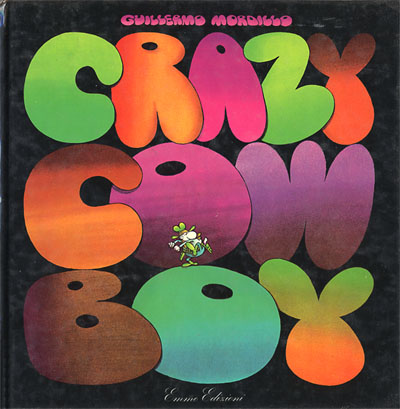
His final project was an animated feature film, Crazy Island. Produced by the Belgian cartoon studio Grid, German studio Wunderwerk and Chinese Nebula Group, the film centers around two islands. One is filled with humans, the other with animals. When both sink into the ocean, the humans and animals join the same ship in order to find another island.
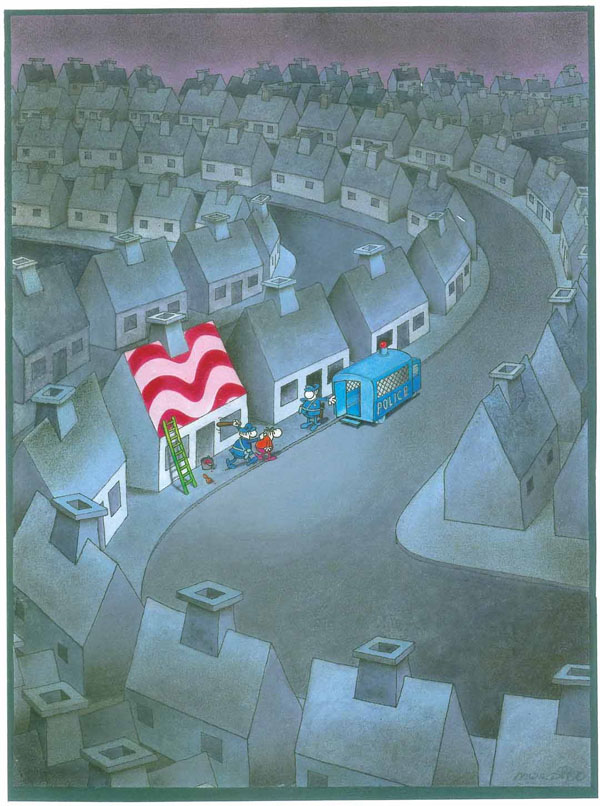
The development of this project (which I have no idea if it will ever see the light of day) was a recurring topic of conversation in our final meetings with Guillermo. Two issues troubled him: the use of CGI to model his creatures and the imposition of dialogue on characters that up to that point had been strictly silent.

On the last of these visits, he showed me the series he was working on: a number of beautiful illustrations where Death and his Little White Man sought and avoided each other in a collection of melancholic pirouettes. Guillermo, always methodical and farsighted, had drawn up a very long list of questions he planned to ask God when he saw him. In spite of that, he declared himself an agnostic (I suppose mostly to forgive in advance the eventual discourtesy of having the interview cancelled at the last minute). But Mordillo’s Little White Man didn’t need words and Guillermo put it all in pictures. If the interview took place, I imagine him ceremonious, saluting cap in hand, before subjecting the Creator to an uncompromising questionnaire.
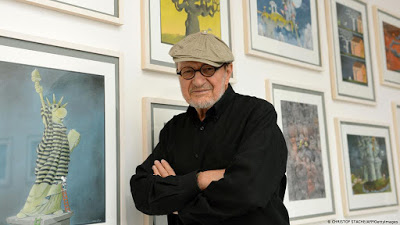
Of course, our usual chatter of animation buffs never stopped or slowed its pace. In our last interview, I was just leaving when he said, forefinger raised by way of farewell, “Let’s see, who was the voice of Donald Duck?”
“Clarence Nash, sir,” I quacked.


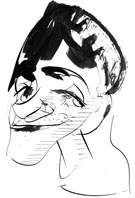 Lucas Nine is an Argentine artist: illustrator, graphic novel author, animator and director of animated films. His work has been awarded several times and published, exhibited and screened in Argentina, Brasil, Mexico, Canada, Spain, Italy, France, Germany, Hungary, Netherlands and Japan. Check out his animation and artwork online:
Lucas Nine is an Argentine artist: illustrator, graphic novel author, animator and director of animated films. His work has been awarded several times and published, exhibited and screened in Argentina, Brasil, Mexico, Canada, Spain, Italy, France, Germany, Hungary, Netherlands and Japan. Check out his animation and artwork online: 








































I remember seeing Mordillo’s cartoons in German magazines in the 1970s. The signature feature of his characters was known as the “Knollennase”, which means “tuber nose”. (“Knollen” is also a short, squat beer bottle. In Australia we call them “stubbies”.) Of the samples you’ve provided here, I have to say I prefer Mordillo’s earlier work.
I was surprised to learn that there was a branch of McCann Erickson in Lima, but I probably shouldn’t have been. After all, they had a studio in Australia, which in the 1950s had a population of comparable size to Peru, and both countries began broadcasting television around the same time. Bryce Courtenay, who later became Australia’s best-selling novelist, started out as a copywriter for McCann Erickson; for Mordillo as well, the agency was a springboard to greater things.
Yes, there are Mc Cann Eriksons in many places. Here in Buenos Aires we have one (or we had) and I had the pleasure of working for them once, althought I never met Mr. Mc Cann or even Mr. Erikson (if they were different persons)…
McCann died in 1962, Erickson in 1936. But I’m glad working at the agency was a pleasant experience for you.
Thanks for a delightful overview of a talented cartoonist; I particularly liked the gags with the elephant and the giraffe, and the football match, in the first YouTube video, both culminating in a well-executed visual punchline. If Mordillo was able to deliver his post-mortem questionnaire, I’m sure God found it captivating.
Dang, he was some artist. I’ve never heard of him before. An excellent post, Mr. Nine!
Wonderful article. I’m amused by the thought of Lima becoming a haven for animation. I do wonder how my life would’ve turned out if that were the truth.
As for Trick or Tree, something about an utterly pedestrian cartoon that goes with a blackface gag in 1961 really justifies in my mind that “Yeah, I’m not sure Famous was a great place to grow your career.” Famous was quite capable of doing neat cartoons in this era (hell, like Jerry Beck, I’ll even defend Chew Chew Baby to an extent), but quite frankly, Mordillo made the right choice finding other horizons. May he rest in peace.
Well, it’s noteworthy that althought Mordillo did not develop a career in animation in Lima, stayed in the city at least four years working as illustrator. Another celebrated argentine cartoonist, Oski, had settled there in those years. It wasn’t an unusual destination. By the other hand, Peru had (and still has) great artists. Check out the incredible Malaga Grenet (who worked mainly in Argentina) and Alberto Vargas.
Duly noted. Thank you for the reply. 👍🏼
Quite prescient of Mordillo’s woodpecker in “Trick or Tree” to be reading the Woodstock Journal. Pretty rotten cartoon, though; no wonder he didn’t feel exactly inspired.